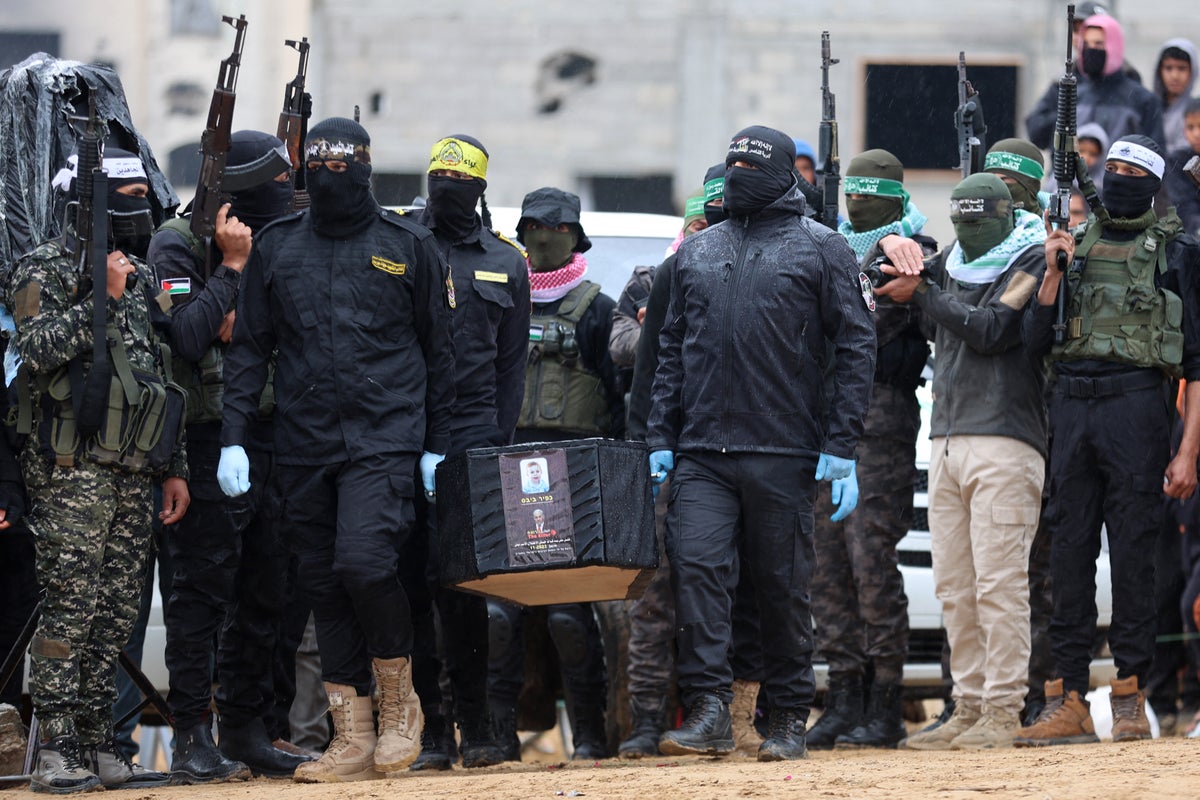
Hamas is in a muddle. Should it stay or should it go? Can its leadership accept disarmament and exile to save Gaza from further Israeli bombardment, release its remaining hostages, and leave the future enclave to a foreign occupation – in the name of peace?
The Islamic Resistance Movement, as Hamas is strictly known, knows what it is when it’s fighting. It is a schizophrenic mess when it is not at war.
And now it may be close to irrelevant. For a militant movement that has built its world view on martyrdom, and has been prepared to provoke staggering violence from Israel, Hamas knows that its irrelevance is now existential.
From its own perspective, its atrocities of October 7 2023 when it killed 1,139 people including 36 children, 71 foreigners and 373 members of the Israeli security forces, have had the result of provoking a local clash of civilisations.
In the logic of the Islamic Resistance, Israel’s brutal reaction to the murders and capture of 250 hostages, has been so unconscionable that Israel is now facing more international pressure and condemnation that it has since the 70s and 80s, when it was the subject of global opprobrium and some sanctions. That is “success”.
The cost to Palestinians, some 67,000 killed, according to local officials – more than half of them women and children – has perhaps now become too much even for Hamas to bear. The movement’s negotiators in Qatar were reported to have accepted several ceasefire deals that Benjamin Netanyahu’s government rejected over recent months in an effort to dial down the death toll.
Its chief negotiator, Khalil Al-Hayya, was one of the targets of Israel’s bombing raids against his Qatari offices. Still he has headed to Egypt this week for talks with US mediators Jared Kushner, and Steve Witkoff, and Israeli negotiators which include spy chiefs from Mossad and the Shin Bet – who were responsible for targeting him.
Hamas has indicated that it wants a ceasefire in return for releasing its remaining hostages – about 20 still alive and 28 bodies. The US proposals, endorsed by Israel but merely welcomed by many others in the region as an effort to achieve peace, require that Hamas disband, disarm, and disappear.
Hamas could do that. Its own charter is a sufficient muddle to allow for compromise (aside from the hope for personal survival among its less fanatical members).
Article 20 of its 1988 Charter, says inter alia: “Without compromising its rejection of the Zionist entity [Israel] and without relinquishing any Palestinian rights, Hamas considers the establishment of a fully sovereign and independent Palestinian state, with Jerusalem as its capital along the lines of the 4th of June 1967, with the return of the refugees and the displaced to their homes from which they were expelled, to be a formula of national consensus.”
This means that Hamas, reluctantly, accepts that Israel exists as such and that a two-state solution is in the interests of Palestinians – because the movement understands most Palestinians would accept such a scenario.
Trump’s proposals require both sides to reignite their efforts to pursue a lasting peace through talks intended to establish a viable Palestinian, and a safe Israeli, state.
Article 16 of the same charter is intended to snuff out allegations that Hamas is an antisemitic organisation: “Hamas affirms that its conflict is with the Zionist project, not with the Jews because of their religion. Hamas does not wage a struggle against the Jews because they are Jewish, but wages a struggle against the Zionists who occupy Palestine.”
So, Hamas doesn’t actually have to fight on.
But confusingly the first part of its article 20 appears to demand the destruction of the state of Israel as such: “Hamas believes that no part of the land of Palestine shall be compromised or conceded, irrespective of the causes, the circumstances and the pressures and no matter how long the occupation lasts. Hamas rejects any alternative to the full and complete liberation of Palestine, from the [Jordan] river to the [Mediterranean] sea”.
So Hamas maybe does have to carry on its campaigns until it controls all of what is now both Palestinian and Israeli territory.
These tensions are likely to be graphic on the ground. Hamas leadership in Gaza has a very different view of the war from those who enjoy the comforts of exile already.
They will also be aware that as an organisation that is fundamentally all about liberating Palestinian lands from what it considers a “Zionist Entity” – Hamas can either lead grass roots militancy or it can watch from the sidelines.
There are dozens of groups of men and women in Gaza and on the West Bank for whom peace with Israel can only come when they, at least, have forced a viable state of Palestine into existence.
Many take arms, training, and money from Hamas and its Iranian backers. But they are already outside of its command structures. They are a wave that Hamas can ride or drown in its turbulence.
Israel’s mass killings, its use of starvation as a tactic of war, its own claims to the same land “from the river to the sea” which is part of Netanyahu’s Likud Party’s charter too, has driven many young people to consider violence the only viable option in a hopeless existence.
Those feelings will deepen and fire more violence unless they can see a near prospect of real emancipation because of a return to genuine peace talks and the close vision of a Palestinian state.
Hamas has always used violence to destroy that hope and, in the last timed terrorist attacks against Israeli civilians, precisely to blow up diplomatic advances.
Hamas has a record of causing chaos and surfing its waves. It is unlikely to give that up – and Israel is just as unlikely to offer the hope to Palestinians to end the occupation that gave rise to the Islamic Resistance Movement in the first place.
